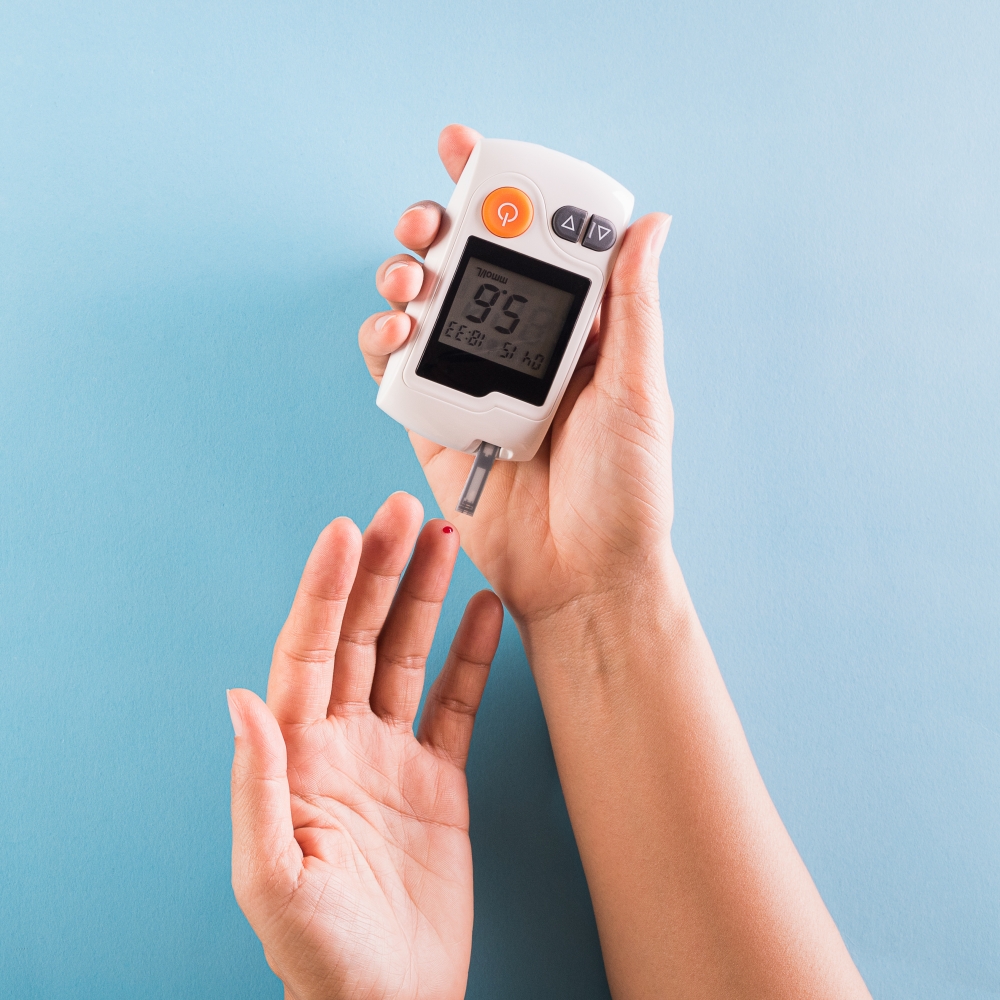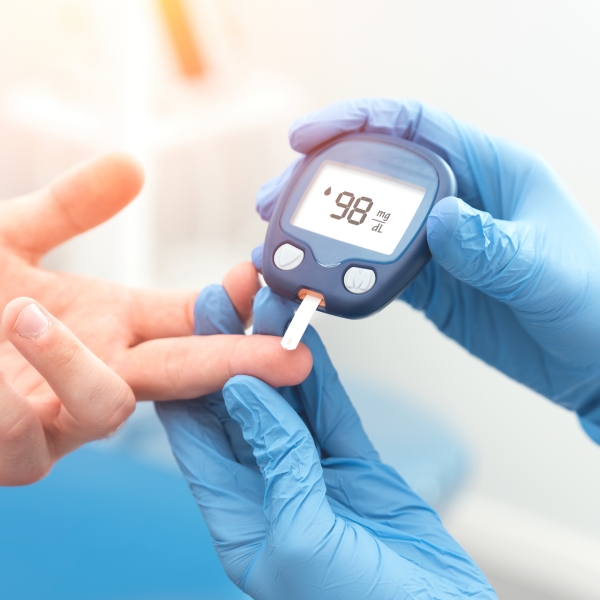Living with diabetes, The CGM has got your back
Nowadays, the management of diabetes has advanced significantly, with technology playing a key role in improving the quality of life for patients. One such advancement is Continuous Glucose Monitoring (CGM), which allows patients to continuously monitor their blood sugar levels. This technology helps individuals track their glucose levels in real time while providing insights that promote greater awareness in making adjustments to their behaviors, such as diet, exercise, medication, and other lifestyle choices for better management.
How Continuous Glucose Monitoring (CGM) Works
Continuous Glucose Monitoring (CGM) is a technology used to continuously track blood sugar levels throughout the day without the need for fingerstick blood glucose tests (Blood Glucose Monitoring, BGM). This device uses a small sensor, roughly the size of a human hair, which is inserted under the skin, typically on the back of the arm or the abdomen, to measure glucose levels from the interstitial fluid—the fluid between cells. The sensor then transmits data to a receiver, which displays the results on a device such as a smartphone. Currently, there are three main types of CGM systems:
- Real-time CGM (rtCGM) – A system that continuously measures and displays glucose levels, automatically sending data to the receiver via Bluetooth.
- Intermittently-scanned CGM (isCGM) – A system that measures glucose levels continuously, but the user needs to scan the receiver to view and record the glucose readings.
- Professional CGM – A system that is worn by the patient for 7-14 days. The patient does not see the glucose levels while wearing the device. Healthcare professionals can access the data for analysis, which helps in adjusting treatment plans.
Benefits of Continuous Glucose Monitoring (CGM)
- Helps Improve Blood Sugar Control – The CGM device provides real-time data on how food intake affects blood sugar levels, helping to increase awareness of lifestyle choices. This allows patients to adjust their diet, exercise, or insulin dosage (for those on insulin therapy) more appropriately.
- Helps Prevent Hypoglycemia and Hyperglycemia – The CGM alerts users when their blood sugar is too low or too high before symptoms occur, helping to prevent dangerous episodes of hypoglycemia (low blood sugar) and hyperglycemia (high blood sugar).
- Enhances Treatment Effectiveness – With more detailed information on blood sugar levels, both doctors and patients can communicate more effectively and make more accurate adjustments to medication dosages. This reduces stress and improves the overall quality of life for patients.
Considerations Before Using Continuous Glucose Monitoring (CGM)
- Calibration
Choose a CGM device from a company that regularly calibrates its equipment to ensure data accuracy. If the device alerts that blood sugar levels are abnormally high or low, it is recommended to confirm the result with a fingerstick blood test.
- Cost
CGM devices are still relatively expensive, and there are additional costs for replacing the sensor every 7-14 days.
- Side Effects
Some users may experience skin irritation or allergic reactions to allergens such as Isobornyl acrylate, which is used to attach the device to the skin. It is advisable to consult a healthcare professional before use and monitor for any adverse reactions after the device is installed.
- Sensor Replacement
The device's sensor needs to be replaced every 7-14 days. If the patient is unable to replace the sensor themselves, they may need to visit a healthcare facility for assistance.




